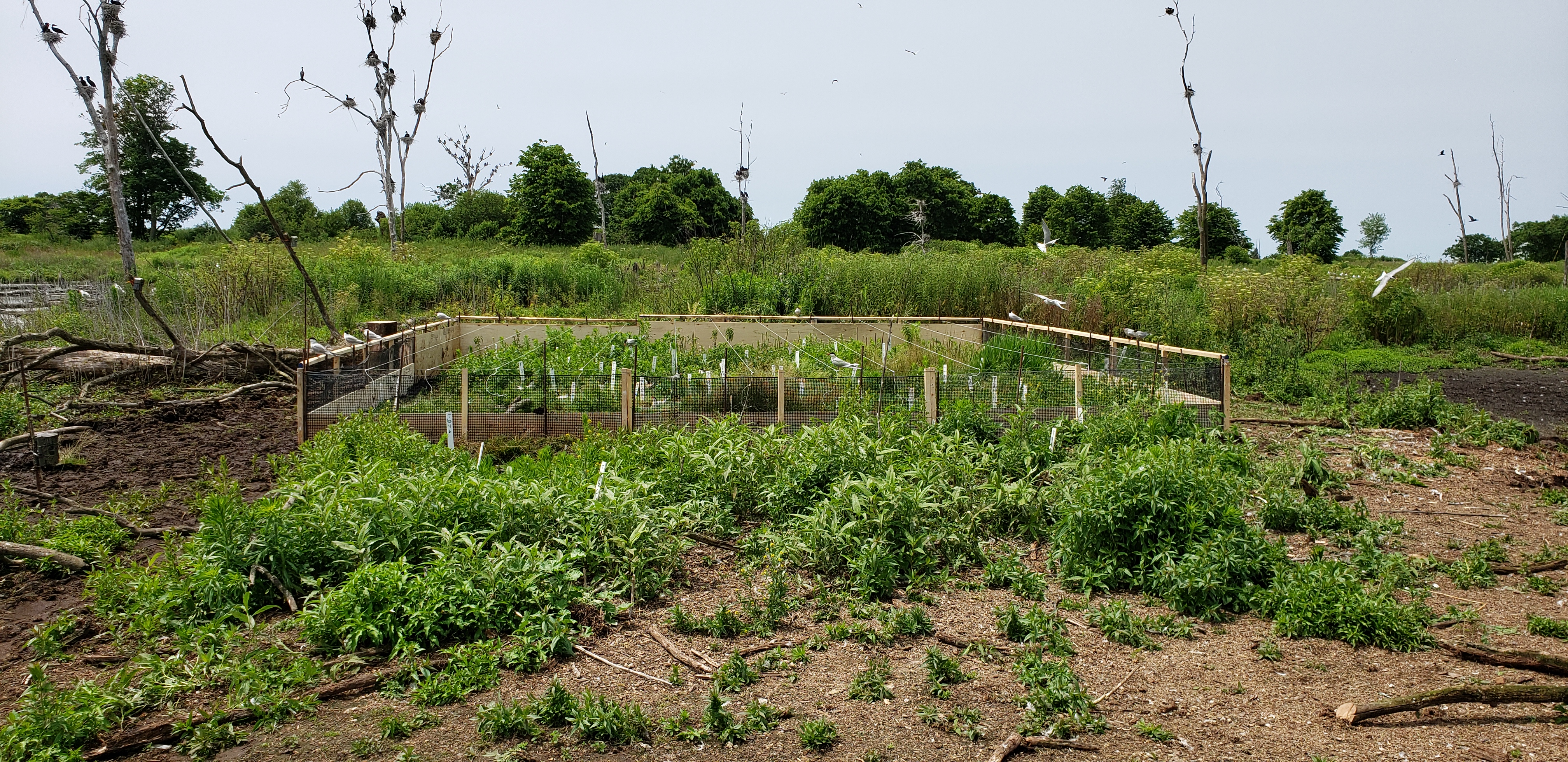
Over the autumn months, the Park’s biodiversity team, led by Don Tyerman, constructed a new predator-exclusion grid for Common Terns on High Bluff Island. These birds have historically suffered from heavy nest predation by Black-crowned Night Herons, but recent management methods, developed in collaboration with Jennifer Arnold and Stephen Oswald of Penn State University, have resulted in restored breeding productivity.
This management involves constructing predator-exclusion girds by fencing around an approximately 50 m2 breeding area and stringing visible wires over the top, so that only birds the size of terns can land inside. These protected areas are used by nesting terns and in them they successfully fledge many young chicks. The construction last autumn increased the habitat available for Common Terns to breed at Presqu’ile in 2021.
During the spring, the predator-exclusion grids will be closed off to prevent gulls from nesting in them. After the terns return in May, the grids will be reopened to encourage the returning breeders to initiate nesting, and then overhead wires installed once nests are initiated. If all goes well, this year we should see more terns attracted to breed at Presqu’ile than at any time over the past ten years and many young chicks raised. Thanks to Friends of Presqu’ile who supported this work.
Find out more about Common Tern research at Presqu'ile on our website: Common Tern Research


